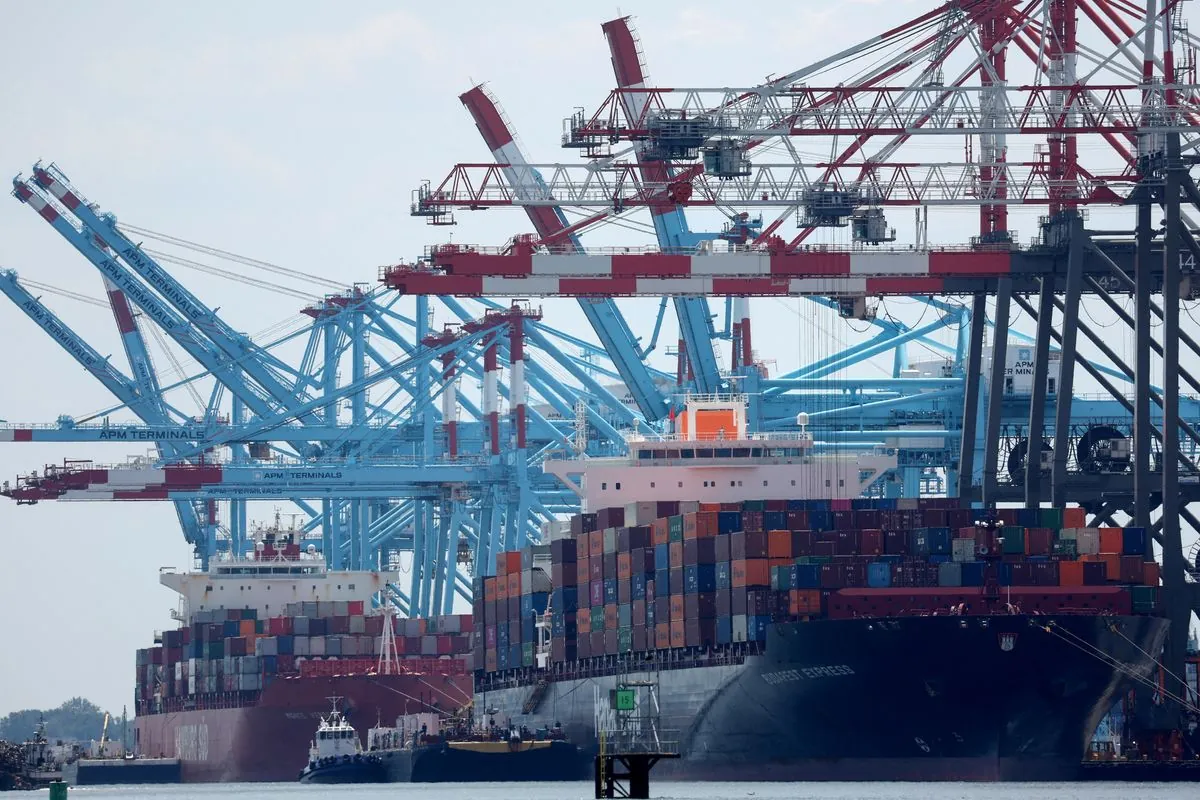The U.S. Department of Labor has initiated contact with the United States Maritime Alliance in anticipation of a potential ports strike along the East Coast and Gulf Coast, as reported by the employer group on September 23, 2024. This intervention suggests the federal government's readiness to facilitate an agreement between the involved parties.
The impending strike, which could commence as early as October 1, 2024, threatens to disrupt operations at some of the nation's busiest ports. The Port of New York and New Jersey, the largest on the East Coast, processes 15,000-16,000 Twenty-foot Equivalent Units (TEUs) daily. These ports, spanning from Maine to Texas, collectively manage approximately 50% of U.S. imports.
This is not the first instance of government involvement in labor negotiations. In the summer of 2023, following disruptions at California ports, President Biden dispatched Acting Labor Secretary Julie Su to mediate a crucial contract between West Coast seaport employers and union workers. The resulting agreement, which included a 32% pay increase, was expected to set a precedent for East and Gulf Coast labor talks.
The United States Maritime Alliance (USMX), a non-profit organization representing East and Gulf Coast longshore industry employers, has expressed willingness to engage with the Federal Mediation & Conciliation Service for contract negotiations, provided both parties agree to mediation. However, USMX reports difficulties in scheduling a meeting with the International Longshoremen's Association (ILA) to continue discussions on a new Master Contract.
"We are open to collaboration with the Federal Mediation & Conciliation Service in contract negotiations, contingent on both parties agreeing to mediation."
The potential strike highlights the critical role of longshoremen, also known as dock workers or stevedores, in maintaining the flow of maritime trade. Founded in 1892, the ILA represents these essential workers who handle cargo at ports across the East and Gulf Coasts.
The U.S. maritime industry has undergone significant changes since the first container ship sailed in 1956, revolutionizing trade. Today, container shipping accounts for approximately 60% of global seaborne trade, with the average container ship capable of carrying between 3,000 to 24,000 TEUs.
The ongoing labor negotiations occur against the backdrop of a global container shipping market valued at $8.7 billion in 2023. The U.S. boasts over 360 commercial ports, with the Port of Savannah emerging as the fastest-growing container port in the country.
The potential strike could have far-reaching implications for U.S. trade. The Panama Canal expansion in 2016 allowed larger ships to reach East Coast ports, increasing their importance in global trade networks. The Port of Houston, the largest on the Gulf Coast, could also face significant disruptions.
As negotiations continue, the situation underscores the delicate balance between labor rights and economic stability. The National Labor Relations Act of 1935 guarantees workers' right to organize, while the Merchant Marine Act of 1920 (Jones Act) regulates maritime commerce in U.S. waters.
The U.S. Department of Labor, established in 1913, plays a crucial role in mediating such disputes. Its involvement, along with agencies like the International Maritime Organization (IMO) which sets global shipping standards, highlights the complex interplay of national and international factors in resolving labor conflicts in the maritime industry.
As the October 1 deadline approaches, all eyes are on the negotiations between the USMX and ILA, with the potential strike posing significant challenges to U.S. supply chains and the broader economy.
